Doctors Weigh In on the Exercise Habits That Slow Aging
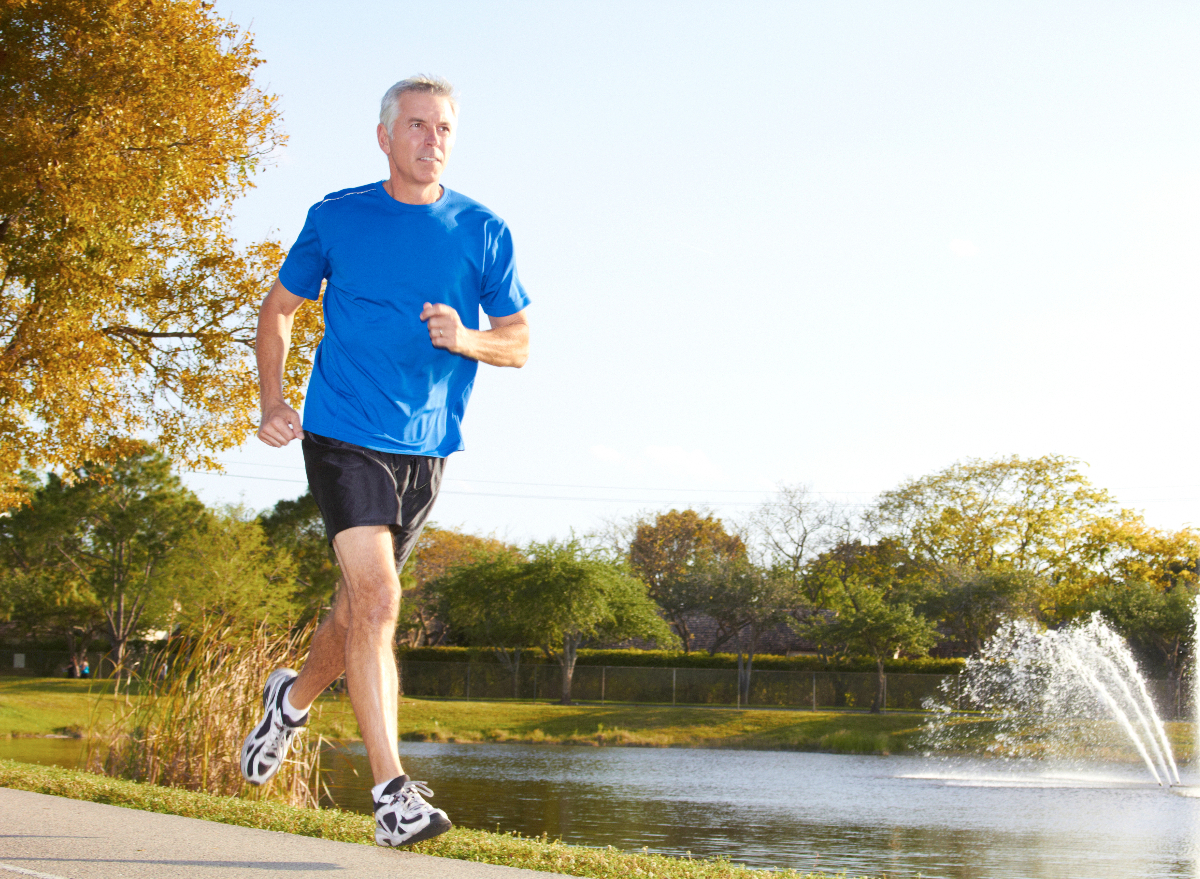
When you embark on your fitness regimen, you likely expect to experience a handful of benefits that'll make your efforts worth your while. For instance, you may want to become stronger, relieve pain, or lose excess weight. On top of that, you might hope that the specific kind of exercise you're doing will help you look and feel more youthful. So we've chatted with the experts to find out the exercise habits that slow aging. Keep reading to learn more.
Getting in regular exercise can significantly decrease your risk of heart disease, stroke, dementia, and more.
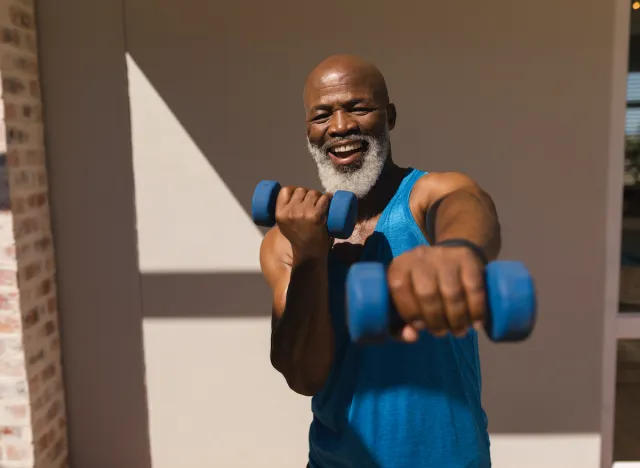
"Regular exercise, started at any age, can dramatically cut the risks of heart disease, strokes, diabetes, chronic pain, depression, dementia, and scores of other health problems," Dr. Jacob Hascalovici, Clearing Chief Medical Officer, tells us. Beyond that, Hascalovici says, "Regular exercise can help offset some of the damage aging causes by maintaining cognitive functioning, strengthening bones, and reducing the chances of having a fall."
With all this in mind, check out the following feedback from Dr. Hascalovici and Anthony Puopolo, RexMD Chief Medical Officer, who both tell Eat This, Not That! why it's in your best interest to try these exercise habits that slow aging.
Related: The Lifestyle Habits That Slow Down Aging, From a 100-Year-old Neurologist
Perform low-impact exercise.
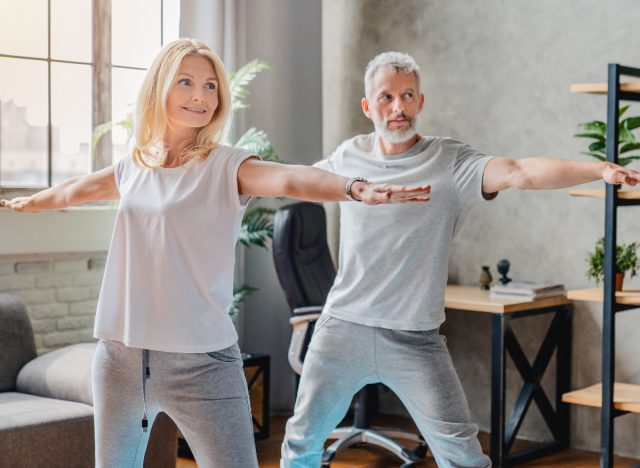
Low-impact exercise is always a solid choice, because it decreases the strain put on your joints and gives you a mood boost. What's better than that? Hascalovici recommends physical activities like swimming, tai chi, cross-country skiing, yoga, biking, and walking. Hascalovici also points out, "Online videos offer many more options, and people often like to design an exercise program that includes a variety of different exercises."
Aim for an exercise regimen that includes both cardio elements and strength training to avoid the declines that come with growing older. Hascalovici notes, "In general, 150 minutes (or 30 minutes a day, 5 days a week) is the right amount of activity to aim for."
Related: The Strength Training Habits That Slow Aging, According to Science
Stretch regularly.
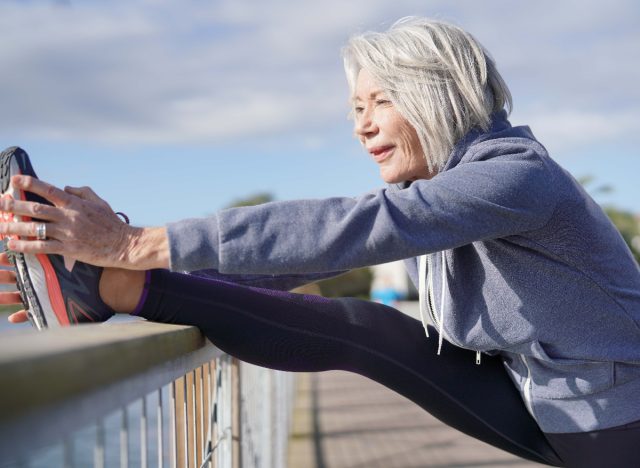
According to Hascalovici, sticking to a regular stretching routine can help you avoid the physical pain that comes with aging, especially if you target the specific body parts affected. Feel free to incorporate stretching as part of your warm-up or cool-down.
As for what stretches will offer you the benefits you're looking for, everyone's needs are different. Hascalovici says your doctor will be able to determine the most beneficial ones for you.
Take the stairs whenever possible.
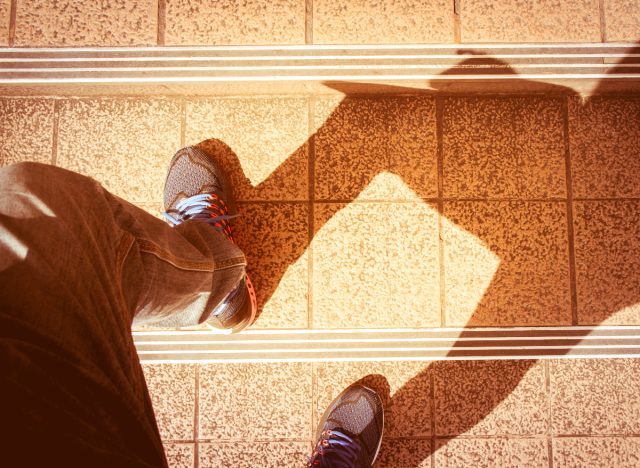
Last but certainly not least, skip the elevator or escalator and take the stairs whenever possible. "If you are looking for an exercise to slow down the aging process that has both the benefits of building strength and endurance, climbing stairs is a great option," Puopolo tells us.
Climbing the stairs can help you fight the loss of muscle strength and bone density that occurs as you age. "Older people experience loss of balance and weakness in their lower quadrants, which can lead to restrictions on movement, or in the worst case scenario, serious injury due to falls," Puopolo explains. "Climbing stairs, when done safely, provides many of the benefits of weight lifting such as building strength in our calves, quadriceps, and hamstrings, and also having bone density building characteristics."
By climbing those steps at a "walking pace," this physical activity is low-impact and can enhance your endurance. So lace up your sneakers, and let's get to it!








